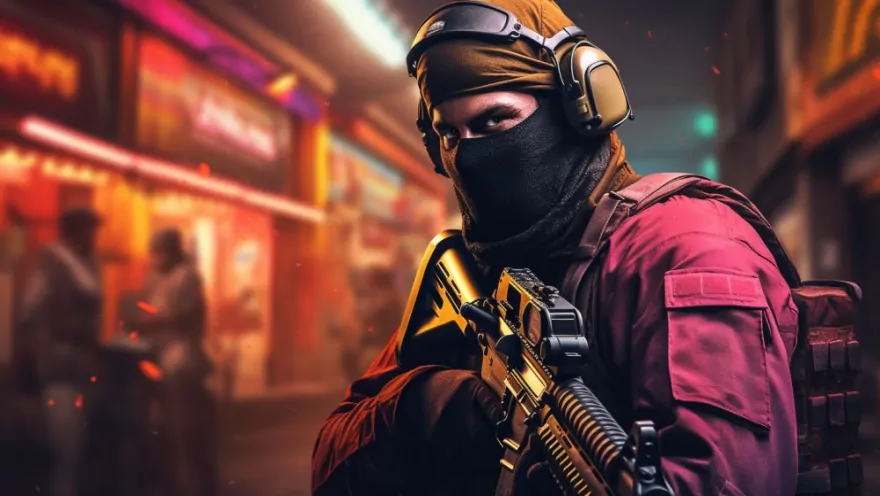Counter-Strike, a highly popular first-person shooter game, has been a central figure in the gaming community for over two decades. Its impact stretches far beyond entertainment, influencing various aspects of life, including education. This article reviews the existing research on how Counter-Strike affects education, examining both positive and negative outcomes. Let’s dive into the multifaceted relationship between this iconic game and the educational sphere.
The Educational Benefits of Playing Counter-Strike
Have you ever wondered how gaming could sharpen your mind? Counter-Strike is not just about reflexes and quick thinking; it also fosters a range of cognitive skills. Studies suggest that players often develop better problem-solving abilities, as they need to strategize and make split-second decisions under pressure. The game’s complex scenarios require critical thinking and situational awareness, which can translate into better academic performance.
In the virtual battlefield of Counter-Strike, players are required to work together, communicate effectively, and coordinate strategies to achieve common goals. This collaborative aspect of the game has significant educational benefits. Research indicates that these teamwork skills are transferable to classroom settings and group projects, promoting cooperative learning and enhancing students’ ability to work well with others.
Living in the digital age means technological proficiency is more important than ever. Counter-Strike players often become adept at using computers and related technologies, a skill set that’s invaluable in modern education. They learn to navigate complex interfaces, customize settings, and even troubleshoot minor technical issues, all of which can make them more comfortable and competent in tech-driven educational environments.
Symbiosis of Education and Counter Strike
Students often find themselves diving deep into research about their favorite games, with Counter Strike being a prime example. This enthusiasm frequently manifests in the creation of discussion board posts, a type of student work that involves presenting thoughts, insights, and questions in an online forum. These posts serve as a medium for sharing knowledge, debating strategies, and exploring the intricacies of gameplay with peers who share similar interests.
Crafting a compelling discussion board post about Counter Strike requires a thorough understanding of the game, including its mechanics, history, and current meta. Students start by selecting a specific topic or question, then back up their points with evidence from reliable sources, and engage with other students by responding to comments and fostering an ongoing conversation. Interestingly, many students opt to use services and make request buy discussion board post on the EduBirdie portal, which offers tailored assistance in creating well-researched and engaging posts. This not only helps them manage their time more effectively but also ensures they produce high-quality content.
In these posts, students might discuss recent updates, share their experiences with different tactics, or analyze professional gameplay to gain a deeper understanding of Counter Strike. The collaborative nature of these forums enhances the learning experience, as students can benefit from the diverse perspectives and expertise of their peers, turning a simple discussion into a rich educational endeavor.
The Potential Downsides of Counter-Strike on Education
Distraction and Time Management Issues
Despite its benefits, Counter-Strike can also be a double-edged sword. One of the most significant concerns is the potential for distraction. With its addictive gameplay, students might find themselves prioritizing gaming over studying. Research has shown that excessive gaming can lead to poor time management, resulting in procrastination and decreased academic performance.
Counter-Strike is known for its violent content, which has raised concerns about its impact on young minds. Some studies suggest that exposure to in-game violence can desensitize players to real-world violence and negatively affect their behavior. This could translate into aggressive behavior and a lack of empathy, potentially hindering social and emotional development crucial for a well-rounded education.
Late-night gaming sessions are a common issue among avid Counter-Strike players. The blue light from screens and the stimulating nature of the game can disrupt sleep patterns, leading to sleep deprivation. Lack of sleep has been linked to various cognitive impairments, including reduced concentration, memory issues, and lower academic performance. Thus, maintaining a healthy balance is crucial to avoid these adverse effects.
Balancing Gaming and Education
Implementing Structured Schedules
So, how can students enjoy the benefits of Counter-Strike without it negatively impacting their education? One effective strategy is implementing structured schedules. By allocating specific times for gaming and study, students can ensure that neither activity interferes with the other. This balance can help manage time more efficiently and prevent gaming from becoming a source of distraction.
Encouraging Responsible Gaming
Promoting responsible gaming habits is another essential step. This involves setting boundaries, such as limiting gaming sessions to weekends or after homework is completed. Parents and educators can play a significant role by monitoring gaming activities and encouraging breaks to prevent extended periods of play. Such measures can help students develop a healthy relationship with gaming and avoid its potential pitfalls.
Integrating Gaming into Educational Curricula
Gamification of Learning
Why not harness the power of gaming to enhance education? The concept of gamification involves integrating game-like elements into educational activities. Counter-Strike’s strategic and collaborative aspects can be mirrored in classroom activities to make learning more engaging. For instance, using competitive quizzes or team-based projects can motivate students and make complex subjects more accessible.
Educational Game Development
Another innovative approach is incorporating game development into the curriculum. By learning to create their own games, students can gain valuable skills in programming, design, and problem-solving. This hands-on experience can foster a deeper understanding of technology and creativity, bridging the gap between gaming and education. Imagine students creating a game with Counter-Strike’s complexity – the learning potential is immense!
Counter-Strike’s impact on education is multifaceted, offering both benefits and challenges. While the game can enhance cognitive skills, teamwork, and technological proficiency, it also poses risks of distraction, exposure to violence, and sleep deprivation. Striking a balance through structured schedules, responsible gaming, and integrating gaming elements into education can help maximize the positive impacts while mitigating the negatives. Ultimately, like any tool, the value of Counter-Strike in education depends on how it is used. By understanding and leveraging its potential, we can turn this popular game into a powerful ally in the educational arena.

